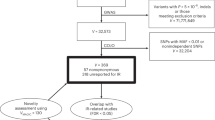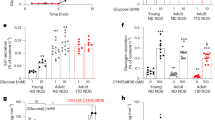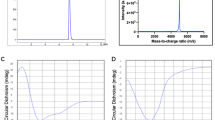Abstract
Summary: In order to investigate the significance and relative contribution of glucagon (IRG) and insulin (IRI) to neonatal glucose homeostasis, studies were conducted utilizing somatostatin (SRIF) in newborn fasting lambs aged 1–3 days. A priming dose followed by constant infusion of SRIF was maintained for 2 hr. During the first hour, SRIF alone was infused (period A); during the second hour, glucagon or insulin were additionally infused (period B); recovery was assessed 30 min after cessation of infusions (period C). During period A, a rapid and sustained suppression in the plasma concentrations of IRG and IRI occurred (P < 0.01), accompanied by a fall in plasma glucose significant at 60 min. Reinfusion of glucagon (5 ng/kg/min) during period B raised IRG by 342 ± 92 pg/ml (mean ± SEM, P < 0.01). Despite ongoing SRIF, plasma IRI also rose by 19.7 ± 7 μU/ml (P < 0.05) and was not accountable by contamination of the infused glucagon with insulin. Plasma glucose rose modestly, perhaps as a result of the antagonistic effects of glucagon and insulin. After cessation of SRIF and glucagon infusions (period C) plasma IRG fell, plasma IRI rose, and plasma glucose fell significantly (16.5 ± 4 mg/dl, P < 0.01). When insulin (0.1 units/kg/hr) was infused in period B, plasma IRI rose to approximately 70 μU/ml, plasma IRG remained suppressed and plasma glucose fell profoundly, recovering during period C as plasma IRI fell and plasma IRG rose. When, during period B, glucagon was infused at 10 times the original dose, plasma glucose concentration doubled despite a plasma IRI concentration of 100 μU/ml.
These results demonstrate that: (1) SRIF effectively inhibits IRI and IRG secretion in newborn lambs; (2) glucose falls when both hormones are acutely suppressed, suggesting that glucagon is a major hormone for maintaining blood glucose concentration during short term fasting; a rise in glucose, as occurs in insulin-deficient diabetes, would be expected if insulin were the dominant hormone; (3) both insulin and glucagon and acute changes in the effective ratio of these hormones modulate glucose homeostasis; and (4) at physiologic concentrations glucagon can overcome the suppressive effects of SRIF on insulin secretion in newborn lambs.
Speculation: In the lamb, insulin and glucagon are both important for neonatal glucose homeostasis. Acute changes in the ratio of these two hormones can effectively modulate plasma glucose concentration presumably through governing hepatic glucose output and/or peripheral glucose utilization. Extrapolation, made with due caution to human newborns, would suggest that the observed changes in glucagon and insulin in the immediate postnatal period have physiological significance in glucouse homeostasis.
Similar content being viewed by others
Log in or create a free account to read this content
Gain free access to this article, as well as selected content from this journal and more on nature.com
or
Author information
Authors and Affiliations
Rights and permissions
About this article
Cite this article
Sperling, M., Grajwer, L., Leake, R. et al. Effects of Somatostatin (SRIF) Infusion on Glucose Homeostasis in Newborn Lambs: Evidence for a Significant Role of Glucagon. Pediatr Res 11, 962–967 (1977). https://doi.org/10.1203/00006450-197709000-00006
Issue date:
DOI: https://doi.org/10.1203/00006450-197709000-00006
Keywords
This article is cited by
-
Blood glucose, plasma insulin and glucagon response to intravenous administration of glucose in premature infants during the first week of life
Journal of Endocrinological Investigation (1982)
-
Plasma somatostatin concentration in the preterm neonate
European Journal of Pediatrics (1982)
-
An in vivo model for testing somatostatin suppression of growth hormone release in sheep
Journal of Endocrinological Investigation (1980)



